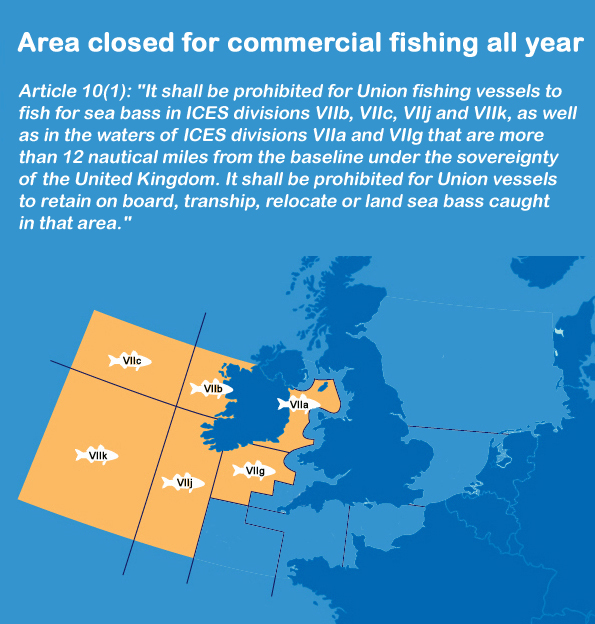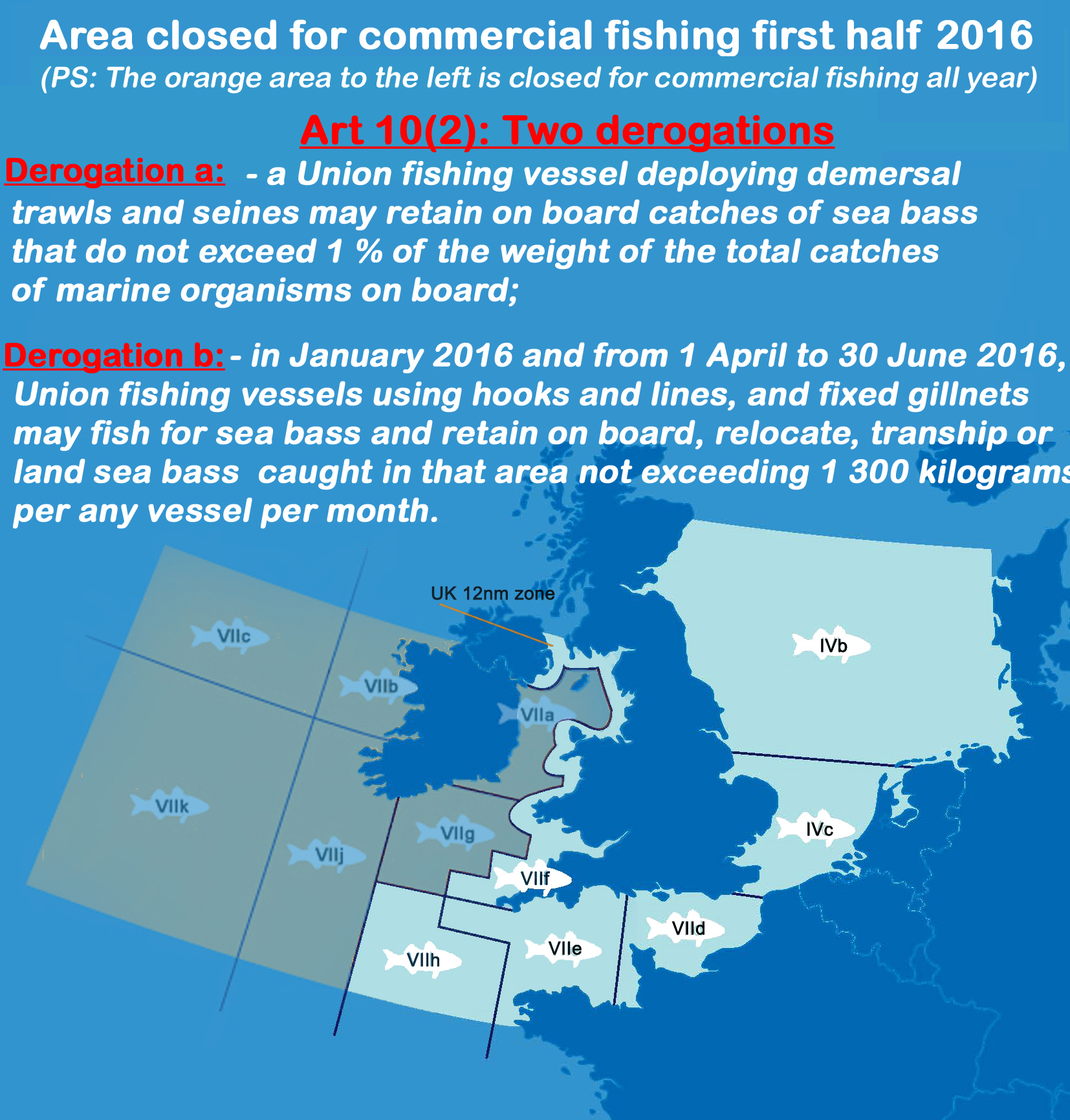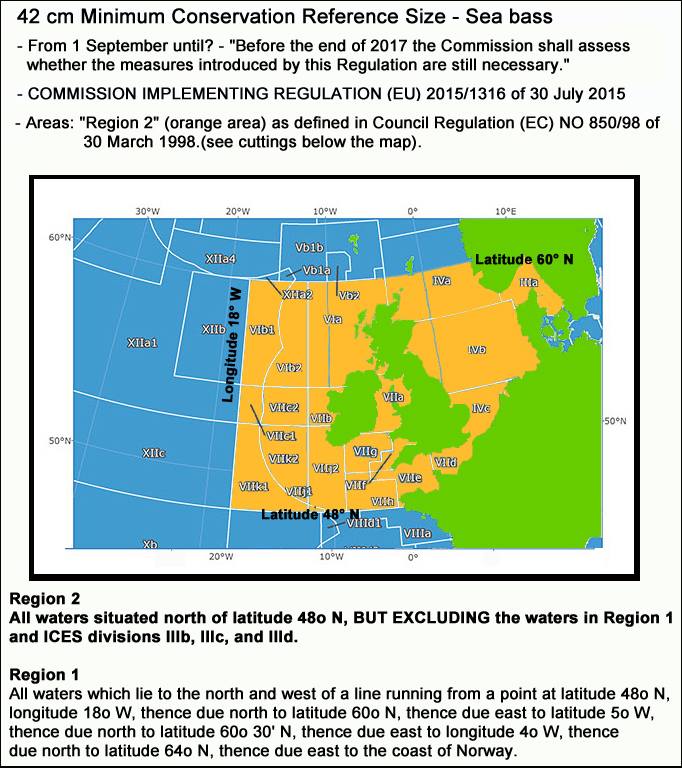2016 sea bass management measures
European sea bass is one of the most important and valuable species to recreational sea angling and its dependent businesses.
Introduction:
The management of sea bass is a Member States competence. For the first time in 2015, the European Commission took unilateral emergency measures to protect a stock which was on the verge of collapsing. The European Commission included management measures for sea bass in its proposals to be decided by the EU Fisheries Ministers during their December 2015 Council meeting. The EU Fisheries Ministers adopted measures (original text here) that did not correspond to the EU Commission’s proposal. The EAA disapprove of these measures and many sea anglers expressed their discontent. Why these rules are unfair to sea anglers and why they make no sense:
The fish swimming in the seas around Europe are a common stock and belong to no one and all.
Recreational fishing has been unfairly treated compared with commercial fisheries - in particular compared with "fishing vessels using hooks, lines and fixed gillnets". The EAA does not understand why the EU Member States have decided specific measures for “small scale fishers” against the Commission's proposal and the larger economic importance of the recreational sector. Zero landings during the first half of 2016 and one fish only the other six months for sea anglers will do unnecessary and disproportional harm to recreational angling and its dependant businesses, which lose millions of euros due to these measures.
These measures will prolong the time for the stock to recover and are unfair to recreational anglers and other fishers.
A bag limit of three fish year-round for recreational sea anglers - except from some closed months to leave the fish to spawn (which could/should be different months for different areas) - would have been more economically and socially reasonable and fair.
Detailed rules applicable:
Different measures were decided for recreational and commercial fishermen, applicable as of the 29th January 2016. Some will be applicable for all 2016, others will only be applicable for the first or the second half of the year.
Rules applicable for recreational fishermen:

Rules applicable all year for commercials: the area around Ireland is closed.

The closure is all year round. It is worth noticing, that even though commercial fishing for bass is prohibited in this area, it is still anticipated that some bass will be caught as by-catch. This by-catch has to be discarded, as: “It shall be prohibited for Union vessels to retain on board, tranship, relocate or land sea bass caught in that area.”
Rules applicable for the first half of the year for commercials: closure with an exemption for “small scale fishers”.

Vessels using demersal trawls and seines are permitted to keep by-catches of bass of up to “1% of the weight of the total catches of marine organisms on board”.
Rules applicable for the second half of the year: increased commercial opportunities for small scale fisheries.

Positive discrimination has been given to the "small scale fishers", fishing vessels using hooks, lines and fixed gillnets. These vessels can legally catch and land up to 1,300 kg bass per month - and their bass fishing is only closed in February and March (for other metiers' bass fishing is banned from the 1st of January to the end of June), which for many were the lowest catch periods anyway.
Additional information:
A Minimum Conservation Reference Size 42 cm took effect on the 1st of September 2015, for both commercial and recreational fishing. The MCRS 42 cm is unaffected by the proposals mentioned above, but shall be evaluated "before the end of 2017" - see map below. It is worth noticing that the area where the bass MCRS applies is much wider than the areas where other bass management measures apply, but the new MCRS does not apply to bass in southern EU waters.
